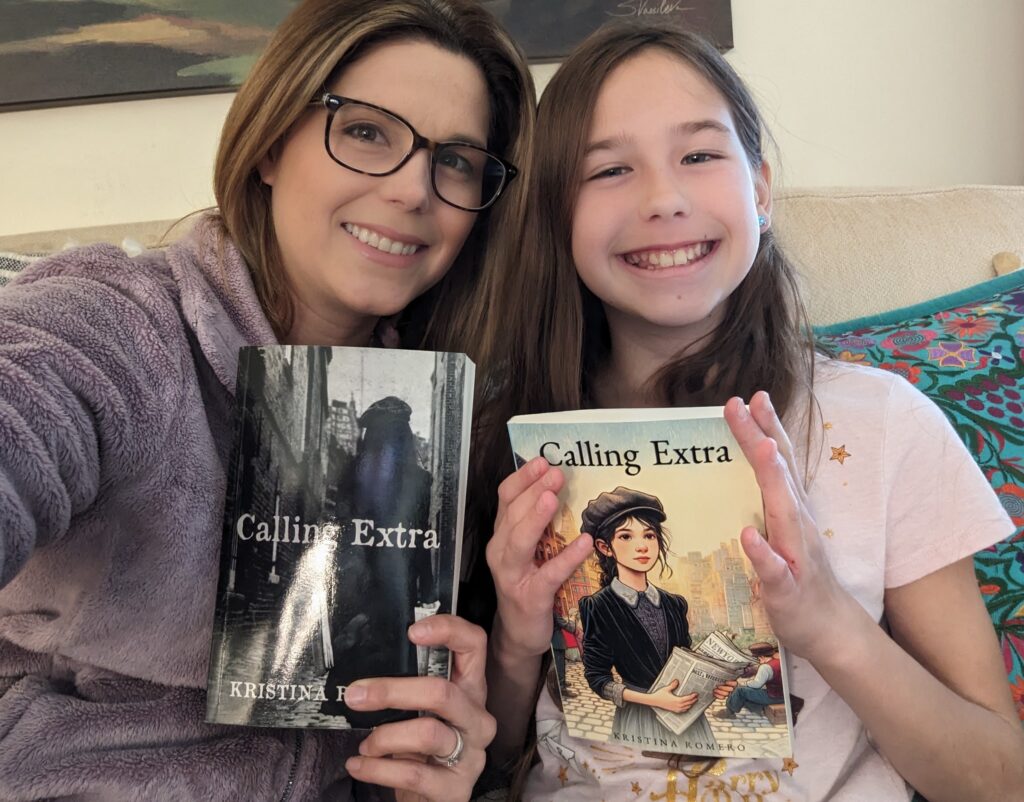It Took Me 11 Years to Understand My Target Market
When my daughter finally reached the age of devouring books independently (kicked off by her love of the Harry Potter series), I was thrilled to introduce her to my historical fiction novel, Calling Extra. I had finished the book and published it just one month before I found out I was pregnant with her. This introduction was 11 years in the making.
There were many reasons for her to love the book. She loved books with female characters her age, and was obsessed with both the Broadway show and movie Newsies. With this book all about a 12-year-old girl caught up in the Newsboy Strike of 1899, it was a shoo-in.
She was delighted when I told her I had written a book, so I pulled it out from the dark recesses of my closet. She took one look at the cover and just shrugged, “ok.”
“You’re going to love it, I promise.” I encouraged. But I didn’t see the kind of reaction I hoped.
The book had positive reviews from readers her age, so I knew she would enjoy the story, but something about it wasn’t clicking. “I’ll read it.” She’d promise. As the months ticked on, I’d find the book untouched on the shelf.
Then it dawned on me. “Do you like the cover?” I asked.
“Not really,” she admitted.
I surveyed the black-and-white photo-realistic cover that I worked so hard to create. I shot the image myself, got a costume for the young model, purchased papers from the 1800s for accuracy and even found a street that looked like old New York City in downtown Washington D.C. But even with all that hard work to make a cool looking cover, my daughter felt it was dark, flat and gave off a different vibe than what she would want to read.
I went to my computer and started hacking away at a new cover I knew my daughter would pick up. I went with an illustration, bright colors, and a forward-facing image of the main character. When I called her over to check it out, her mouth dropped. “I love it!” She said, “It looks like me.” She beamed from ear to ear. “I want to read that book.” She smiled.
Even though I explained the contents of the book would be the same on the current cover, she wanted to read it when it got the new cover.
Like the loveable story “When You Give a Mouse a Cookie,” I couldn’t just have a new cover. When you give authors a second chance at editing their book, they will want to get a complete professional edit (shout out to Bonnie Boden at Blue Denim Digital).
And when you give a book a complete professional edit, you will want to add details to the chapters that bring more depth to the characters. (The revised version now has a whole new chapter, “Suspicion”)
And when you add more depth to the story, you will want to add a historical map, glossary, and timeline!
As my daughter patiently (actually, impatiently) waited for all this to occur, she started telling her friends and then her teachers about the book. Her enthusiasm was so contagious that they asked me when the new revised version would be available.
That made me think more about my target market and Calling Extra’s use in the classroom. I then conducted more research about books for 5th grade ELA and what would help teachers. That led to adding all the actual dates of the real 1899 newsboy strike into the chapters so students could compare what happens in the fictional story with the actual timeline of the events from 1899. I also learned this is called “factual fiction.”
After a few months of enhancement (and inputs from my 11-year-old middle-grade reader), Calling Extra has resurrected to a new life. All because my daughter hated the cover.
We may know what we think sells, but we truly need to hear from our target market. All it took for me was giving birth to my target market and then waiting for her to grow up.
A focus group would have worked as well. 🙂
Calling Extra (with its shiny new cover) is available now on Kindle and Paperback. Pick up your copy if you have a middle-grade reader or love historical fiction–it’s a fun read for adults, too!


